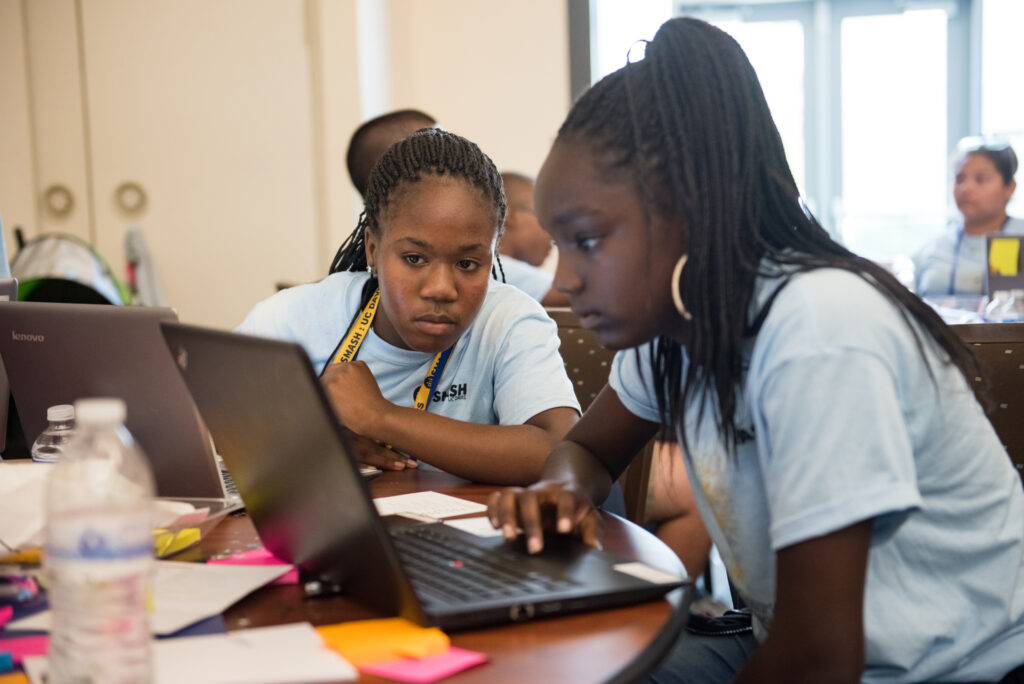Anticipation Guide

Bloom's Level
Use
Setting
Activity
Technology
Related Strategies
Description
An anticipation guide is a comprehension strategy that activates students’ prior knowledge and promotes critical thinking about a new topic or concept before learning about it. Anticipation guides include thought-provoking statements that support or challenge students’ prior understanding or beliefs. Students typically respond to the statements with binary responses such as yes/no, true/false, or agree/disagree. An anticipation guide stimulates interest and sets a purpose for learning while providing the teacher with a formative assessment of students’ prior knowledge and experiences. After engaging with the new material (reading, conducting research, watching a video, completing a task, etc.), students revisit their anticipation guide, evaluating their new understanding, acknowledging any changes in beliefs, and correcting any misconceptions.
When To Use It
As a learning strategy, use an anticipation guide when you want students to:
- apply prior knowledge and beliefs to discussions about an upcoming topic
- think critically about an upcoming topic or concept
- review information about an upcoming topic
- reflect on their knowledge and thinking before and after a unit of study
As an instructional strategy, use an anticipation guide when you want to:
- introduce a new topic by activating prior knowledge and asking students to share their current beliefs and understandings
- facilitate discussion before exploring a new topic
- assess students’ knowledge before and after a unit of study
- spark interest and curiosity about a new topic
- provide a purpose for reading or exploring a new topic or concept
How To Use It
Advance Prep
- Prepare the anticipation guide by creating statements that align with the learning objectives or goals of the unit of study. Statements may be true or false. Statements should:
- relate to the key ideas and concepts from the learning material
- anticipate students’ misconceptions
- challenge students’ current beliefs and understanding
- require a binary response (yes/no, true/false, agree/disagree), or response along a continuum (strongly agree, agree, disagree, strongly disagree)
- Anticipation Guides can be organized in a variety of ways, but teachers often use a three-column table. The left column is for responses before learning (e.g., Agree/Disagree). The middle column is for the statements, and the right column is for responses after learning.
Example statements from various content areas:
- Reading: Look at the cover of the story. The children are excited to embark on a new adventure. (Yes/No)
- Social Studies: Parents should be held responsible for their child’s actions. (Agree/Disagree)
- Math: If you round 45 to the nearest ten, the answer is 40. (True/False)
- Science: The water cycle begins when water evaporates from an ocean, lake, or stream. (True/False)
*Some teachers may ask students to explain the rationale for their responses during discussion or as a part of their written responses.*
Implementation
- Post or provide students with a copy of the anticipation guide and model how to complete it.
- Have students respond to the statements individually, in pairs, in small groups, or as a whole class.
- Discuss students’ responses, and encourage them to explain their thinking or make predictions about the topic. Do not focus on correct or incorrect answers at this time.
- Have students engage with the learning materials, paying attention to how their initial thoughts may be confirmed or changed as they explore the topic.
- After students have explored the topic, have them revisit their responses on the anticipation guide and respond to the statements again, applying what they learned.
- Discuss changes in thoughts or beliefs as a result of what they learned. Have students explain and support their ideas with evidence from the learning materials.
Pros
- Promotes critical thinking
- Stimulates interest and curiosity about a new topic
- Promotes comprehension by helping students connect prior and new knowledge
- Supports diverse learners with comprehension of new material
- Helps students focus on key ideas as they explore new learning material
Cons
- Students might focus only on validating answers to the questions in the anticipation guide instead of applying critical thinking as they explore the new topic
- Some students may feel discouraged or reluctant to share their opinions about a topic if they have little or no prior knowledge.
Culturally Responsive Application
Anticipation guides can be culturally responsive when the statements are deliberately designed to address the needs of diverse learners and use language and ideas to help culturally diverse students make connections to the topic. Through partner, small-group, or whole-class discussions, all students can share their initial thoughts in a safe space without focusing on correct or incorrect responses.
Emerging English Language Support
Anticipation guide strategy will lead and limit the students background knowledge that related with the text, so their response will be specific.
Students with Disabilities Support
They are appropriate for at-risk student or students with disabilities. Anticipation guides can be completed by individuals, peer duos, or small groups.
Subjects
1.1 Literature, 1.2 Informational texts, 1.5 Speaking and listening, 1.6 Language, 1.7 Reading in science & technical subjects, 1.8 Reading in history & social studies, 2.1 K-8 mathematics, 2.2 High school number & quantity, 2.3 High school algebra, 2.4 High school functions, 2.5 High school geometry, 2.6 High school statistics & probability, 3.1 Earth and space science, 3.2 Life science, 3.3 Physical science, 3.4 Engineering, technology, and application of science, 4.1 Civics, 4.2 Economics, 4.3 Geography, 4.4 History, 5.1 Computing systems, 5.2 Networks & the internet, 5.3 Data & analysis, 5.4 Algorithms & programming, 5.5 Impacts of computing
- ABOUT US
- AREAS OF FOCUS
- Equity in CS EducationAdvancing access and equity in K-12 computer science education
- Inclusive Pathways to TechSupporting inclusive and alternative pathways to tech jobs
- Diversifying Entrepreneurship & VCInvesting in gap-closing companies and funds
- Equitable Tech PolicyAdvancing policy, regulation, and accountability to drive systemic change
- PUBLICATIONS
- RESPONSIBLE AI
- RESOURCES